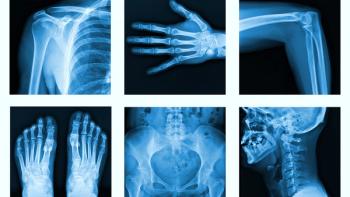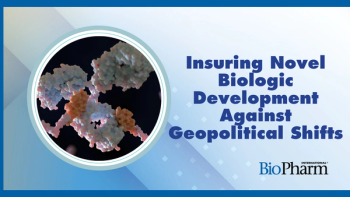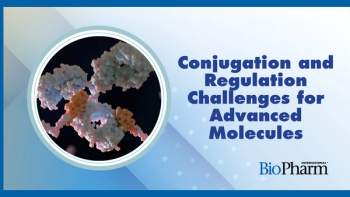
- BioPharm International-11-01-2019
- Volume 32
- Issue 11
Cell and Gene Therapies Necessitate New Lot Release Test Methods
Accelerated timelines and small batch volumes of cell and gene therapies pose unique challenges for product-release testing.
Product-release testing is required for all drug products to ensure their quality and safety. For most conventional small-molecule and biologic drugs, batches are held until the release testing results are received and confirm the product is within specifications. Cell and gene therapies and some of their components (e.g., viral vectors), however, often must be used in further processing or administered to the patient within a short timeframe.
Test methods and procedures for product release must therefore be developed that can reproducibly (robust and rugged), accurately, and with sensitivity and precision measure attributes that are critical for cell and gene therapy products in a short time, according to Mo Heidaran, vice-president-regulatory, Parexel Consulting. They should also require small volumes of product for testing to maximize the therapeutic dose delivered to patients. “Most compendial methods used in the pharmaceutical industry today cannot be used for cell and gene therapy products,” he says. “This is mainly due to the sampling requirements specified in the compendial methods and length of time needed to complete these assays. Cost is another factor that should be considered in the development of the product release tests,” Heidaran adds.
As importantly, notes Richard Snyder, vice-president, Science and Technology, Pharma Services, Viral Vector Services at Thermo Fisher Scientific, the potential of cell and gene therapies means that clinical development timelines can be accelerated. “It is vital that analytical methods are developed early in the product lifecycle and that product-specific potency methods are qualified and validated to prevent shifts/changes in dosing during clinical development,” he observes.
Many essential requirements
According to FDA, cell and gene therapy products include vector products (plasmid DNA or messenger RNA), viral vectors, gene-modified cellular products such as chimerical antigen receptor (CAR) T-cells, and unmodified cellular products such as induced pluripotent cells and mesenchymal stem cells. Requirements for product-release testing for these next-generation medicinal products are outlined in several different regulations and numerous guidance documents.
Product release testing must confirm the safety, identity, strength, purity, and quality (SISPQ) of each lot manufactured prior to release, according to Christopher Murphy, vice-president/general manager, viral vector services at Thermo Fisher Scientific. Characterization and quality control are based on physicochemical-biological testing, adds Sarah Snykers, QC manager at Celyad.
For cell therapies, important attributes include viability, and purity- and functionality-related parameters, whereas gene therapy may entail expression of the transgene, replication competent viruses, correct sequence, viral vector copy number, etc. “The quality attributes are always product-specific and should be defined on a case-by-case basis using profound characterization, with the published data on similar products considered as benchmarks,” Snykers stresses. She adds that acceptance criteria/limits are often defined based on sound scientific rationales through process development and tweaked with clinical experience.
It is important to note, according to Heidaran, that not all of the requirements for commercial products must be met for initiation of an investigational new drug (IND) application. “FDA follows a phase-based approach to compliance. For initiation of an IND, sufficient information must be provided to ensure the proper identification, quality, purity, and strength of an investigational product,” he explains. For licensure of cell and gene therapies, manufacturers are also required to establish full compliance with current good manufacturing practices (CGMPs) and other applicable regulations.
Numerous test methods
Intermediate and final product testing may include product-appropriate potency testing, full biochemical characterization testing, bioburden, mycoplasma, and viral testing for the detection of adventitious agents, and testing for both product and process residuals, according to Jeri Ann Boose, senior director of biopharmaceutical services at Eurofins Lancaster Laboratories.
“While classical medicines/drugs (e.g., aspirin) are characterized and released by analytical chemistry methods such as chromatography, capillary electrophoresis, and mass spectroscopy (MS), advanced medicinal therapy products require more complex and novel biochemical and molecular biology assets,” Snykers remarks. Examples include real-time or quantitativepolymerase chain reaction (qPCR), digital droplet PCR (ddPCR), flow cytometry, cell-based assays, sequencing, and enzyme-linked immunosorbent assays (ELISA).
For instance, safety testing of cell- and gene-therapy products typically includes sterility and endotoxin testing, as well as screens for mycoplasma, replication-competent viruses, and other adventitious agents. Sterility testing is generally performed using a combination of two-week culture assays and rapid tests such as gram staining, which is highly insensitive and can only detect gross microbial contamination, according to Heidaran. Endotoxins are evaluated using the limulus amoebocyte lysate assay. Mycoplasma testing is performed using a PCR-based assay that is more rapid than the traditional approach.
Identity testing typically involves the analysis of unique cell surface markers or other markers of the product using flow cytometry or through molecular analysis (e.g., sequencing or PCR).
Potency is optional for Phase I but required for Phase III and is a product-specific attribute. Even though a potency assay is not a requirement for Phase I, FDA highly recommends developing multiple potential assays early on. Potency testing methods depend on the type of product and for viral vectors, cell-based assays are utilized to determine infectivity and transgene expression. Typically, biological assays must be developed for each product that can demonstrate its bioactivity, including cell-based assays to measure infectivity and product-specific potency.
Purity testing includes quantification of residual host-cell proteins (ELISA), DNA (PCR), the level of aggregation, and visualization through gel electrophoresis (sodium dodecyl sulfate–polyacrylamide gel electrophoresis).
Time, cost, and variability challenges
There are a number of hurdles that must be overcome both when developing and performing analytical methods for the product-release testing of cell and gene therapies. “The complexity in quality control and release is a direct result of the unique nature of cell and gene therapeutic products. By definition, quality control is a control against a reference standard. By no means do these reference standards exist for these products at the process level (reference batches) or the analytical level,” asserts Snykers, citing guidance on pharmaceutical development (1).
Additionally, Snykers notes that the high inherent variability of the cellular starting material (especially for autologous therapies) may have a further impact on the consistency of the production process and of the final product. “Together with limited historical clinical data, this hampers cell and gene therapeutic companies from setting meaningful release specifications/acceptance criteria and clinical-relevant potency tests. As these industries mature, it is incumbent on all involved to work to develop accepted standards and processes for rapid and efficient quality testing in order to ensure broad access to high-quality products,” she states.
Given these issues, it can take time to develop analytical methods/assays for cell and gene therapies that are specific, reproducible, and robust, according to Murphy. Quality-by-design (QbD) approaches can provide a systematic method to build up understanding of the product and process under development, and hence identify relevant critical quality attributes (CQAs) and critical process parameters, Snykers comments. “CQAs play a central role in the identification of predictive (in-process) biomarkers for the safety and efficacy of the product in clinical use. A selection of the most meaningful CQAs should ultimately lead to product-release assets and criteria,” she says, citing articles on the subject (2,3).
Ideally, Snykers believes that multiple analytical methods (e.g., omics) should be used during development to identify the most useful analytical tools. “By preference,” she states, “release methods are fast track, automatable technologies such as PCR or flow cytometry-based tools allowing sustainable execution and data processing moving towards [a] biologic license application and marketing authorization application.”
Indeed, Murphy points out that biological assays that rely on cell culture are prone to variability and inconsistent performance, leading to invalid tests or out-of-specification results.
The tremendous variability in the types of systems or platforms used to generate the many cell and gene therapy products available today poses problems as well. “Often there is no clear-cut regulatory guidance as to the exact testing that should be performed. The testing approach is frequently, if not typically, custom, and as such there should be extensive dialogue with the regulators during product development to ensure that all testing needs are met,” Boose says.
Further complicating the situation is the fact that for many cell and gene therapies, completion of the required testing must happen quickly to support short product shelf-lives and the need for immediate delivery of the products to patients, Boose adds. As examples, Snyder points to mycoplasma and adventitious agent testing, which can take weeks to complete, resulting in long lot-release cycle times.
Limitations with regard to the amount of product available for testing is also an important issue, as is the cost of some release tests, according to Heidaran, such as the replication competent lentivirus test used to detect replication competent virus in lentiviral vectors and vector-transduced cells.
Overcoming timing difficulties
Managing the lot-release testing of time-sensitive products can be approached in different ways. Where possible, leveraging methods that have short turnaround times (e.g., flow cytometry, PCR) and rapid microbial detection methods enable lot release for time-sensitive production processes without impacting product stability, according to Murphy. He adds that batch production records are reviewed and approved in real time to ensure issues are identified and assessed quickly.
For testing methodologies with long durations, Boothe observes that early or intermediate assay reads may be taken so that risk is mitigated prior to delivery of the product to the patient. Required tests may also be performed on samples that are representative of the final drug product or in some cases on just the drug substance and not the formulated drug product, according to Heidaran.
“This approach, however, is only acceptable if there are no options to test the product in the final container and sponsors have provided adequate justification to the agency,” Heidaran says. “It is important to keep in mind that FDA regulations explicitly state that for sterility, endotoxin and identity determinations samples should be obtained from the final drug product stored in the final container.”
“FDA has demonstrated some degree of flexibility regarding delivery of the fresh product, recommending the performance of lengthier drug product testing but not requiring the results as a release criterion necessarily,” Heidaran observes. “If the results are positive, for example, from a two-week sterility test, then the manufacturer must notify clinicians and patients and have a plan to mitigate the risk associated with the undesirable positive results,” Heideran explains.
Boose adds that given the short lead times for product delivery to patients, emphasis should be placed on the thorough safety testing of any raw materials used in product manufacture. The manufacturing process should also be studied extensively, and wherever possible, safety should be engineered into the process. In addition, constant communication and coordination between manufacturing, quality control, and quality assurance departments is essential to minimizing the time required.
Promising next-gen solutions
The regulatory landscape is maturing, according to Snykers, and leaving the door open for alternative methods and approaches. For instance, Celyad received approval from FDA, Belgium's Federal Agency for Medicines and Health Products, and the United Kingdom's Medicines and Healthcare products Regulatory Agency to use a validated seven-day automated BacTAlert (bioMérieux) test for sterility and a two-day fast-track qPCR method for mycoplasma for the release of autologous and allogeneic natural killer group 2D CAR-T cell therapies in Phase I clinical development.
Rapid mycoplasma testing and rapid sterility testing are accepted when the rapid methods are validated as comparable to the compendial methods, agrees Boose. FDA, the European Medicines Agency, and the European Directorate for the Quality of Medicines & HealthCare, which publishes the European Pharmacopeia, have issued guidance recognizing rapid sterility tests, and the US Pharmacopeial Convention is developing a new chapter for rapid sterility testing based on the recommendations of a panel of experts, industry leaders, and stakeholders, notes Snykers. She notes that the common thread with all recent guidance is method validation (4–6).
Rapid testing technologies mentioned in these guidance documents include adenosine triphosphate bioluminescence, flow cytometry, isothermal microcalorimetry, nucleic acid amplification, respiration, and solid-phase cytometry. Other alternative tools for rapid sterility testing currently under development are based on qPCR and Raman spectroscopy. To Snykers’ knowledge, however, none of these technologies has been used or approved for release testing of cell and gene therapies to date.
“The way forward,” Snyker says, “is the investigation of risk-based QbD approaches to enable predictive and even prescriptive analytics; the use of controlled, closed, and automated processes to reduce variability and ensure better control of microbial safety; and a focus on allogeneic therapies to eliminate the lot-to-lot and quality variability associated with patient starting materials, the challenges of small lot sizes, and the need for timely release.”
High-performance liquid chromatography and MS platforms capable of sensitive and rapid analysis of viral gene-transfer vector products are being used in analytics developed for product integrity, identity, and purity, according to Snyder. “These technologies are on track to supplant current ELISA and gel electrophoresis-based methods,” he asserts. However, reliable standards and controls need to be established and the assays optimized before they can be used for viral-vector product characterization and lot release.
Similarly, next-generation tests that capitalize on next-generation sequencing (NGS) to detect adventitious agents such as microbial, fungal, and viral contaminants are under development, according to Heidaran, but not yet adequately qualified or validated. “Many companies have coordinated efforts in place to implement NGS, with the focus on developing and optimizing standard procedures and bioinformatics tools,” Boose says.
References
1. EMA/CHMP/ICH/167068/2004: ICH guideline Q8 (R2) on pharmaceutical development, June 22, 2017.
2. M. Heidaran, “Manufacturing Controls at Commercial Scale: A Major Hurdle for the Cell and Gene Therapy Industry.” www.raps.org, April 25, 2019.
3. P. Salmikangas, Regulatory Rapporteur 16 (2) 4–7 (February 2019).
4. CFR Title 21, 610.12, General Biological Products Standards, Sterility.
5. ISO, ISO/AWI 24190, “Risk-based Approach for Design and Validation of Methods for Rapid Microbial Detection in Bioprocesses,” Under development (June 11, 2019).
6. USP, Proposed Chapter <1071> “Rapid Sterility Testing of Short-Life Products: A Risk-Based Approach,” Proposed September-October 2018.
Article Details
BioPharm International
Vol. 32, No. 11
November 2019
Pages: 31-34
Citation
When referring to this article, please cite it as C. Challener, “Cell and Gene Therapies Necessitate New Lot Release Test Methods," BioPharm International 32 (11) 2019.
Articles in this issue
about 6 years ago
Biopharma modeling, now and five years from nowabout 6 years ago
A Diverse Landscape of Patent Issues Seen in the US, UK, and the EUabout 6 years ago
Modeling Comes of Age in Biopharmaabout 6 years ago
Applying Lessons Learned from the Semiconductor Industryabout 6 years ago
What’s New in Manufacturing: Downstream Technologiesabout 6 years ago
KUBio Box for Viral Vectorsabout 6 years ago
Zippered Lab Coatabout 6 years ago
More Consistent Drug Inspection System on Horizonabout 6 years ago
Signatures–What’s in a Name?Newsletter
Stay at the forefront of biopharmaceutical innovation—subscribe to BioPharm International for expert insights on drug development, manufacturing, compliance, and more.




